Image editing or photo retouching, or what some may call image editing and retouching is an umbrella term and can be categorized in subject specific areas such as portrait, editorial, commercial, beauty and creative retouching. Working with the best technique in stipulated timeframe is essential to optimize the image editing workflow.
Photo retouching and editing has become one common but important operation across industries such as eCommerce, fashion, and real estate, these days. If you are a professional working in any of these industries, you might wonder how professional image editors decide which photo retouching techniques to use and how much time to spend on each image.
Contents
It’s important to answer these questions as the scale of retouching operation extends to several hundred images in a day, and the technique you select determines if the process will be optimized. Each of these segments concerning photo retouching has its own set of considerations. For instance, actions and decisions undertaken while editing in the area of Portrait will differ from those undertaken while editing “Beauty” images.
With these complexities surrounding the task, professional image editing experts determine the category, implicit photo retouching techniques and time allocations, against multiple parameters. You need to consider several questions such as:
- How much time is required to retouch one image?
- Who is the client?
- What is intent of the client to use the image for?
- What is the stipulated count of images that are required to be retouched and delivered?
So, possibilities are many and you need to unfold all them by answering these aforesaid questions, as this guide will help you.
Deep dive into different retouching categories
What is the first thing you should do before retouching an image? You must understand different photo retouching techniques, for which you need to get familiarized with various categories under which retouching falls. Here are five prominent categories retouching tasks fall under.
1. Portrait retouching
Portrait retouching involves enhancing and refining the appearance of individuals in photographs. Adjustments to skin tone, blemish removal, teeth whitening, and softening of features while maintaining a natural look are all done here. The goal is to emphasize the subject’s best attributes without overly altering their appearance.
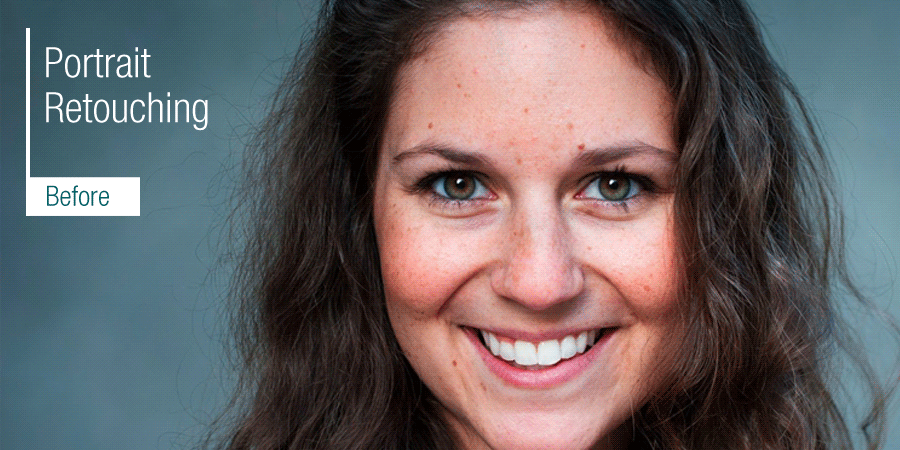
In this retouching process, image editors pay attention to skin texture and tone, ensuring a balance between flawless and natural. They use techniques like frequency separation for advanced skin retouching and the focus is on maintaining proper proportions, especially when it comes to facial features.
2. Editorial retouching
Editorial retouching is usually employed in the fashion and publishing industry to refine images for magazines, advertisements, and other editorial platforms. Enhancing the overall aesthetic appeal of the photograph for emphasizing details to create a captivating visual narrative and image restoration is what it often involves.
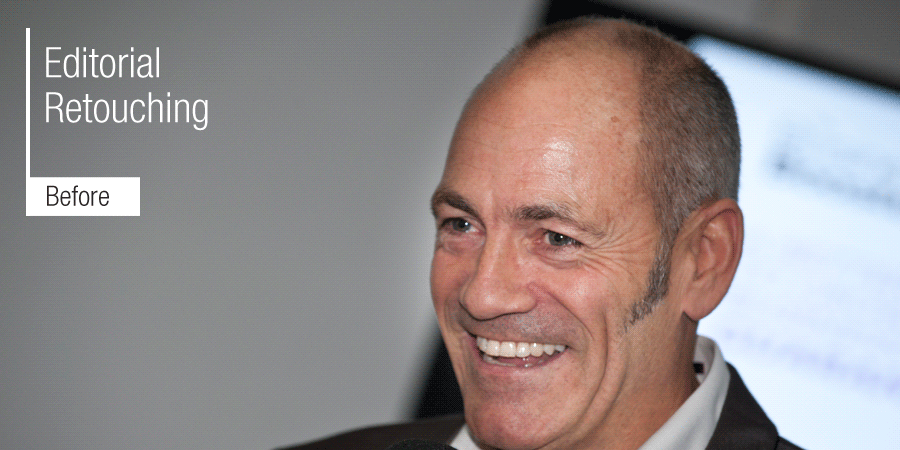
Here, photo editors apply techniques like color grading and balance to achieve a consistent and appealing visual style. In order to make the image pop, they focus on enhancing textures and details. The focus is on maintaining a clean, professional look while retaining the essence of the original photograph.
3. Commercial retouching
Commercial retouching is geared towards improving images used in marketing and advertising campaigns. Product photo enhancement is an important part of this retouching category, where items are polished to perfection. Similarly, lifestyle imagery, where models and settings are enhanced to create an aspirational atmosphere is also another aspect of this category.
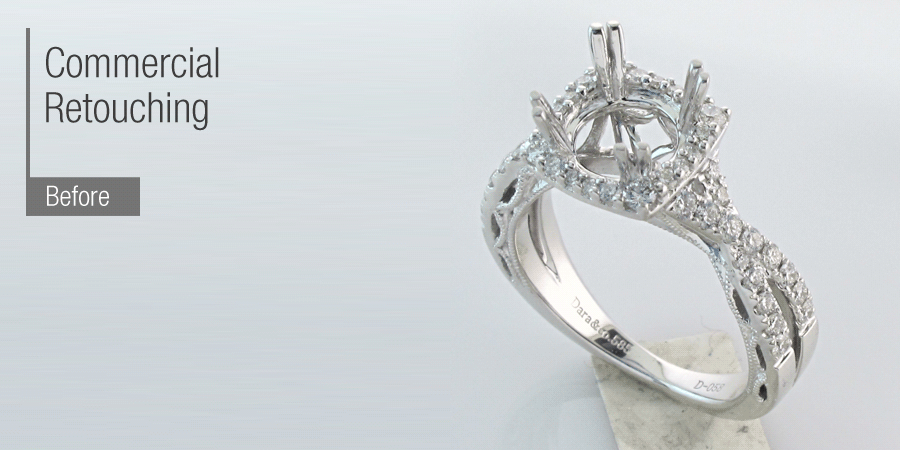
Photo editors lay focus on ensuring that products are showcased in the best possible light, with attention to detail and texture. Utmost attention is given to assuring that models and backgrounds complement the product without overshadowing it, as color correction and consistency are crucial for a polished and cohesive look.
4. Beauty retouching
Beauty retouching focuses on enhancing and perfecting a subject’s appearance in a way that highlights their natural beauty. Skin smoothing, hair adjustments, makeup enhancement, and contouring is what it comprises.
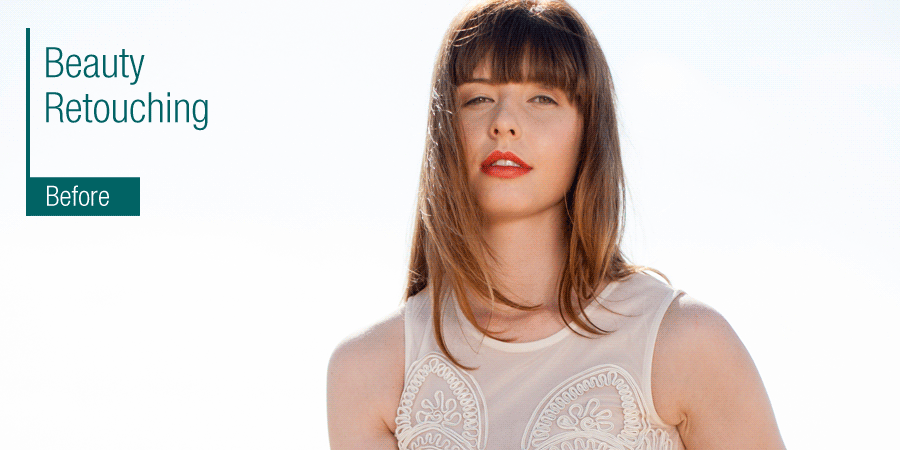
Beauty photo editing experts create a balance between flawless skin and retaining natural texture, while paying attention to subtle enhancements in makeup and hair. Some techniques they use are dodge and burn to sculpt and highlight features while avoiding an overly processed look.
5. Creative retouching
Creative retouching is used to transform images in imaginative and artistic ways using advanced image editing techniques. The process includes working with surreal or fantastical elements, composite imagery, and special effects to convey a specific narrative or emotion.
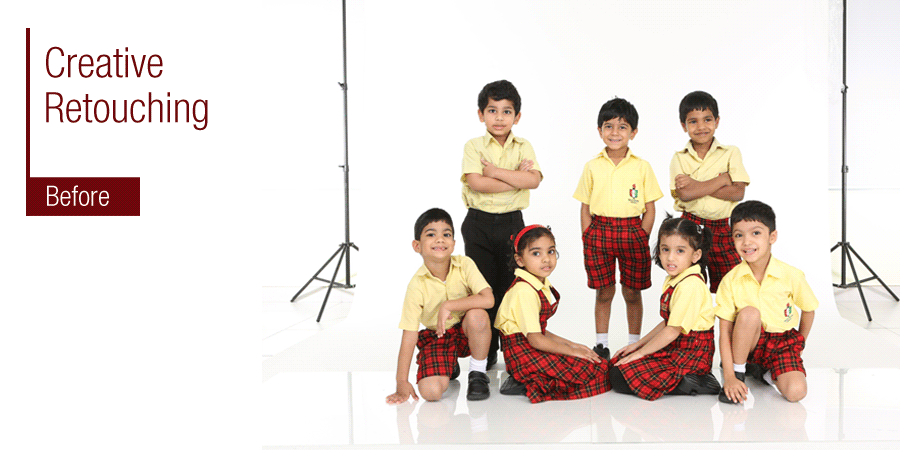
Embrace creativity and experiment with different tools and filters is crucial step in creative retouching. Retouching experts blend multiple images seamlessly to create a cohesive composition, while keeping attention on lighting, shadows, and perspective to maintain realism in fantastical scenes.
Want to understand different photo retouching techniques and categories?
Contact our photo editors »Photo retouching techniques and when image editors select them
Above we went through some common photo retouching categories, which comprise a range of techniques. Below we understand some of these techniques and situations that guide photo editors to consider them.
| Technique | When Image Editors Select |
| Frequency Separation | Used for detailed retouching, particularly in portrait photography. It allows editors to work on skin texture while preserving natural tones. |
| Dodge and Burn | Chosen for enhancing the three-dimensionality of an image. Editors use it to bring out details in highlights (dodge) and shadows (burn), creating depth and dimension. |
| Color Grading | Applied to establish a specific mood or atmosphere in an image. Editors often use it in cinematic or editorial photography to evoke emotions or set a visual style. |
| Composite Editing | Employed when combining multiple images or elements to create a seamless and visually compelling final composition. Common in advertising, surreal, and fantasy photography. |
| Exposure Adjustments | Used to correct overexposed or underexposed areas, ensuring a balanced and visually pleasing overall exposure. Common in landscape and architectural photography. |
| Skin Smoothing | Selected for portrait photography to achieve a flawless and polished look. It reduces blemishes, wrinkles, and imperfections while maintaining natural skin texture. |
| Sharpening | Applied to enhance the fine details and edges in an image, making it appear crisper and more defined. Common in landscape, macro, and product photography. |
| Liquify | Utilized for altering the shape or form of objects or subjects in an image. Editors use it for subtle adjustments or creative transformations. |
| Clipping Path | Used to create precise outlines around objects or subjects, often for isolation or manipulation. Common in e-commerce and product photography. |
| Noise Reduction | Employed to reduce digital noise or graininess in an image, particularly in low-light or high-ISO situations. Common in astrophotography and low-light environments. |
| Vignette | Added to darken the edges of an image, drawing focus towards the centre. It can create a dramatic or intimate atmosphere, emphasizing the subject. |
| Color Correction | Applied to adjust and balance colors, ensuring accurate representation or achieving a specific visual style. Common in product, portrait, and fashion photography. |
| Perspective Correction | Chosen to correct distortions caused by perspective, especially in architectural or interior photography. It ensures lines are straight and parallel. |
| Object Removal | Used to remove unwanted elements or distractions from an image, creating a cleaner and more focused composition. Common in landscape and urban photography. |
Identify the condition of the original image, and the desired final effect.
Consult us today »What factors influence image retouching technique selection
The process of image retouching technique selection heavily relies of multiple factors. Before finalizing a technique, a well-experienced image retouching professional carefully takes a notice of all such factors which we look at below:
Type of image
Each type of image demands a specific approach to retouching. For instance, portraits may require skin smoothing, blemish removal, and enhancing facial features. Landscapes might need adjustments in color balance, contrast, and sharpness. Similarly, product images often require meticulous attention to detail, ensuring the product looks its best.
Initial source image quality
The quality of the original image greatly affects the final result after retouching, as high-quality images with good resolution and clarity provide a solid foundation for retouching, allowing for more detailed adjustments. Low-quality images may limit the extent to which improvements can be made.
Client’s preferences
Understanding and accommodating the client’s vision and style preferences is crucial. Some clients may prefer a natural, unaltered look, while others might seek a more stylized, artistic effect. Here, communication and collaboration with the client are key to meeting their expectations.
Desired aesthetic
Determining the desired aesthetic guides the retouching process. A natural look maintains the original appearance with subtle enhancements. Editorial retouching, which is important here, might involve more dramatic alterations for a polished, magazine-ready appearance. Stylized retouching allows for creative liberties, potentially resulting in unique and artistic interpretations.
Purpose of the image
The purpose of the image (e.g., advertising, editorial, personal) influences retouching choices. For instance, advertising images may require meticulous attention to detail and a polished finish. On the other hand, editorial images may allow for more creative expression, while personal images may lean towards a natural, authentic look.
Level of retouching required
The amount of retouching needed dictates the techniques applied. Light retouching may involve minor adjustments like color correction and blemish removal. Conversely, extensive retouching could include more complex alterations such as background replacement, object removal, or significant skin retouching.
Software used
Different software tools offer varying capabilities and functionalities. Some are specialized for certain tasks (e.g., Adobe Photoshop for detailed retouching, Lightroom for overall adjustments). Familiarity with the software’s features helps in selecting the most suitable techniques for the task at hand. As a result, the type of software you are using for retouching makes a significant difference to the retouching process.
Type of distortion
In the case of radiographic images, factors like body part rotation, central ray angulation, and beam alignment play a critical role. Understanding the geometry of the object and applying corrective measures ensures accurate representation and diagnosis in medical imaging. What kind of distortion image presents; thus gives direction to selection of the image editing technique.
Achieve the desired outcome from your image retouching approach.
Contact our experts »Parameters considered to evaluate image retouching time required
When it comes to retouching photo, one classical question that image-intensive businesses face is “how long should retouching take?” Well, the duration of retouching can vary widely based on several parameters. Simple retouching tasks may take only a few minutes, while more intricate work could require several hours. So, when determining the photo retouching timeframe, experts mull on:
- Image complexity: This factor involves examining the image in detail. An image with a simple composition, minimal elements, and straightforward adjustments will generally take less time to retouch. On the other hand, complex images with intricate details, multiple subjects, or challenging lighting conditions will require more time and attention.
- Number of images to be retouched: The quantity of images in a project is crucial. Editing a single image allows for more meticulous attention to detail, whereas editing a large batch of images may necessitate a more streamlined approach. A larger quantity of images generally requires a faster workflow, but it’s important not to compromise on quality.
- Level of expertise of the editor: The experience and proficiency of the editor play a significant role in determining the speed and precision of the retouching process. Expert editors with years of experience are likely to work more efficiently and produce high-quality as they have worked on diverse assignments.
- Time consumed by different retouching tasks: Different retouching tasks have varying levels of complexity and time requirements. For example, basic tasks like color correction and exposure adjustments may be relatively quick, while more intricate tasks like detailed skin retouching or complex background removal can be time-consuming.
- Tools and software used: The choice of editing software and tools can greatly impact the efficiency of the retouching process. Advanced software with powerful features and efficient workflows can expedite the editing process. Additionally, familiarity with the software allows for quicker navigation and application of various techniques.
- Specific client requests: Incorporating client-specific requests is a crucial aspect of the retouching process. These requests may involve specific aesthetic preferences, corrections, or alterations that are unique to the client’s vision. Adhering to these requests may add extra time to the retouching process, especially if they require specialized techniques or adjustments.
Conclusion
Meticulous consideration of retouching techniques and time allocation is pivotal in achieving impeccable image enhancement. The complexity of these decisions underscores the necessity of photo editing experts.
Outsourcing to a professional editing company not only ensures proficiency but also allows businesses to focus on core operations. A strategic partnership enhances brand perception and engagement.
To unlock the full potential of your visual content, it’s imperative to collaborate with a seasoned photo retouching company. With professional photo editing services, you can elevate your brand’s image and successfully captivate your audience.
Determine the right photo retouching technique to save project time and cost.
Get your photo retouched today »
Hitesh Mistry is one of the key members at HabileData, contributing to lateral growth of the company since its inception. He single handedly manages data processing, customer support, marketing, administrative and people management activities in addition to handling our websites editorial responsibilities.






